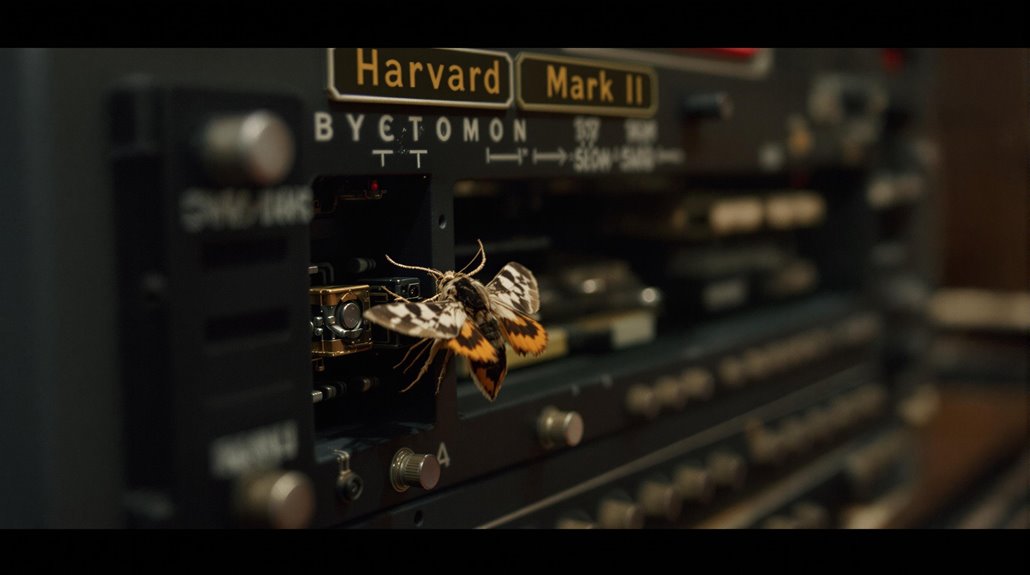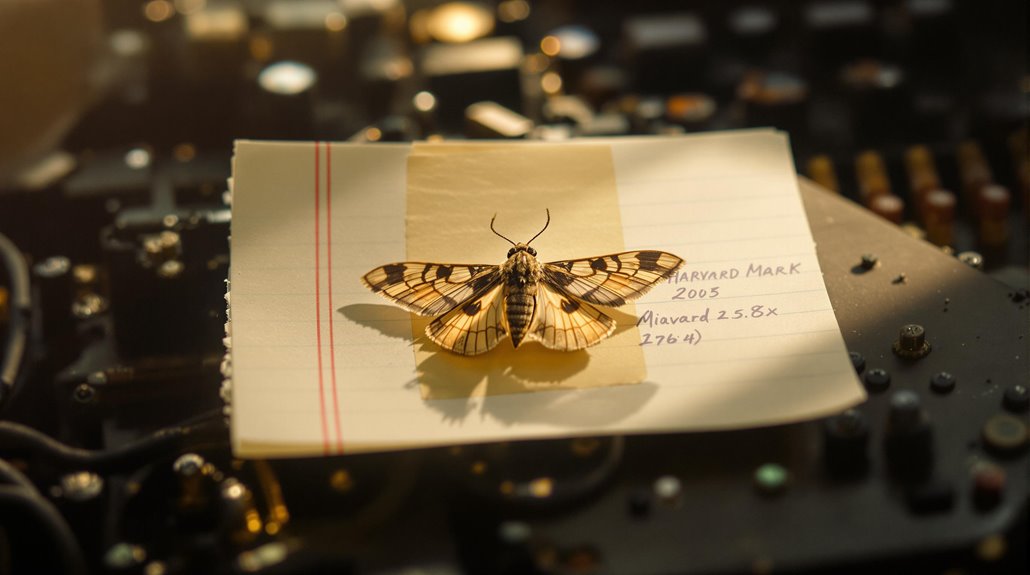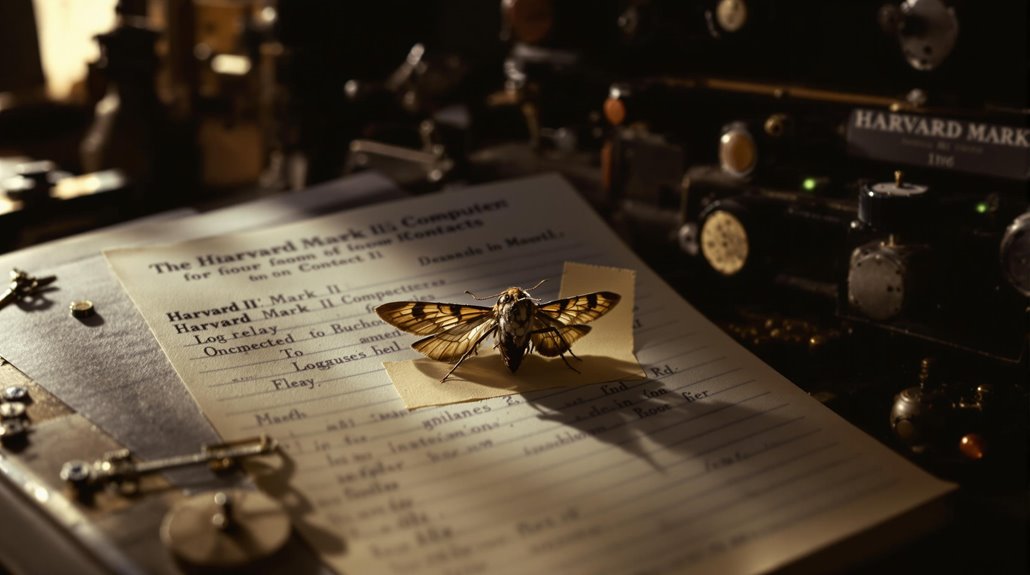Grace Hopper’s Bug Hunt: The Literal Moth That Made “Debugging” Official
You've probably heard developers talk about "debugging" code, but did you know this term stems from an actual insect? When Grace Hopper and her team found a moth trapped in the Harvard Mark II computer in 1947, they weren't just making history—they were cementing a phrase that would define computer troubleshooting forever. While the word "bug" existed in engineering before this incident, Hopper's moth turned a vague technical term into something everyone could understand.
The Rise of Grace Hopper: From Mathematics to Military Computing

While many celebrated computer pioneers began their careers in engineering, Grace Hopper's journey started in pure mathematics. Her mathematics foundation was built at Vassar College, where she earned her BS in mathematics and physics before advancing to Yale for her MS and PhD.
She then returned to Vassar as a mathematics professor, sharing her expertise with students for over a decade. She earned eight hundred dollars annually as a starting professor at Vassar College.
When World War II erupted, Hopper's path took a dramatic turn toward military innovation. At age 37, she joined the U.S. Navy Reserve and was assigned to the groundbreaking Bureau of Ordnance Computation Project at Harvard. She was awarded a leave of absence from Vassar College to pursue her military service.
There, she worked on the Harvard Mark I computer under Howard Aiken's leadership, becoming one of the world's first computer programmers and writing the inaugural manual for Mark I operations.
The Famous Moth Discovery: A Bug in the Machine
While you might think this moth history marks the origin of the term "bug" for technical problems, engineers had already been using the word for years.
In fact, Thomas Edison wrote about bugs in 1878 in one of his letters discussing mechanical problems.
The team discovered the moth when it was caught between relays, causing problems in the Harvard Mark II computer.
However, this incident, which Grace Hopper often referenced in her lectures, cemented the connection between computer malfunctions and "bugs" in popular culture.
Today, you can still see the actual moth preserved in its logbook at the Smithsonian National Museum of American History.
Early Use of "Bug" Before the Moth Incident
Thomas Edison popularized the term "bug" in technical contexts long before Grace Hopper's famous moth discovery. In 1878, he used the word to describe problems with his Quadruplex Telegraph system and even created a "Bug Trap" to address these issues.
You'll find that "bug" had already become common engineering jargon by the 1870s, spreading far beyond Edison's inventions. The term appeared in various technical fields, from military equipment during World War II to mechanical systems. In fact, the word originated from the Middle English "bugge", which was associated with monsters.
By the 1940s, it was so widespread that you'd hear it in popular culture – from comic strips about "bug hunters" to pinball machine advertisements boasting they were "free of bugs."
Even science fiction writer Isaac Asimov used it to describe robot malfunctions in his 1944 stories, demonstrating how deeply embedded the term had become in technical vocabulary.
How a Real Bug Shaped Computing Language
The legendary moth incident of 1947 marked a defining moment in computing history, even though the term "bug" was already well-established.
When Grace Hopper and her team found an actual moth in the Harvard Mark II computer, you could say reality perfectly aligned with the metaphor. Thomas Edison used the same terminology nearly 70 years earlier in his own work. Her extensive work developing compiler technology would later revolutionize programming languages.
This moth metaphor helped shape computing language in four significant ways:
- It cemented "debugging" as the universal term for fixing program errors.
- It provided a tangible example that made technical concepts more relatable.
- It reinforced the idea of malicious entities disrupting system operations.
- It bridged the gap between engineering jargon and mainstream understanding.
The incident's timing during the early days of electronic computing helped establish debugging terminology that you'll still find in use today, demonstrating how a simple moth gave form to abstract concepts.
Grace Hopper's Lasting Impact on Computer Science

Looking beyond the famous moth incident, Grace Hopper's revolutionary contributions to computer science transformed how we interact with machines today.
Her compiler innovation began with the A-0 system in 1952, making it possible for you to write code in human-readable language rather than machine code. You're using programming languages today because she championed English-based computing and developed FLOW-MATIC, which led to COBOL's creation. Teaching at Vassar College, she emphasized clear communication principles that would later shape her approach to computing.
After serving in World War II, she became a Harvard research fellow while continuing her groundbreaking work in computing. Her influence extends far beyond her technical achievements. You'll find her legacy in the USS Hopper destroyer, the Cray XE6 supercomputer, and the annual Grace Hopper Celebration.
Her vision of desk-sized computers and distributed networks proved remarkably prescient. The Presidential Medal of Freedom and National Medal of Technology recognize how her pioneering work shaped modern computing.










